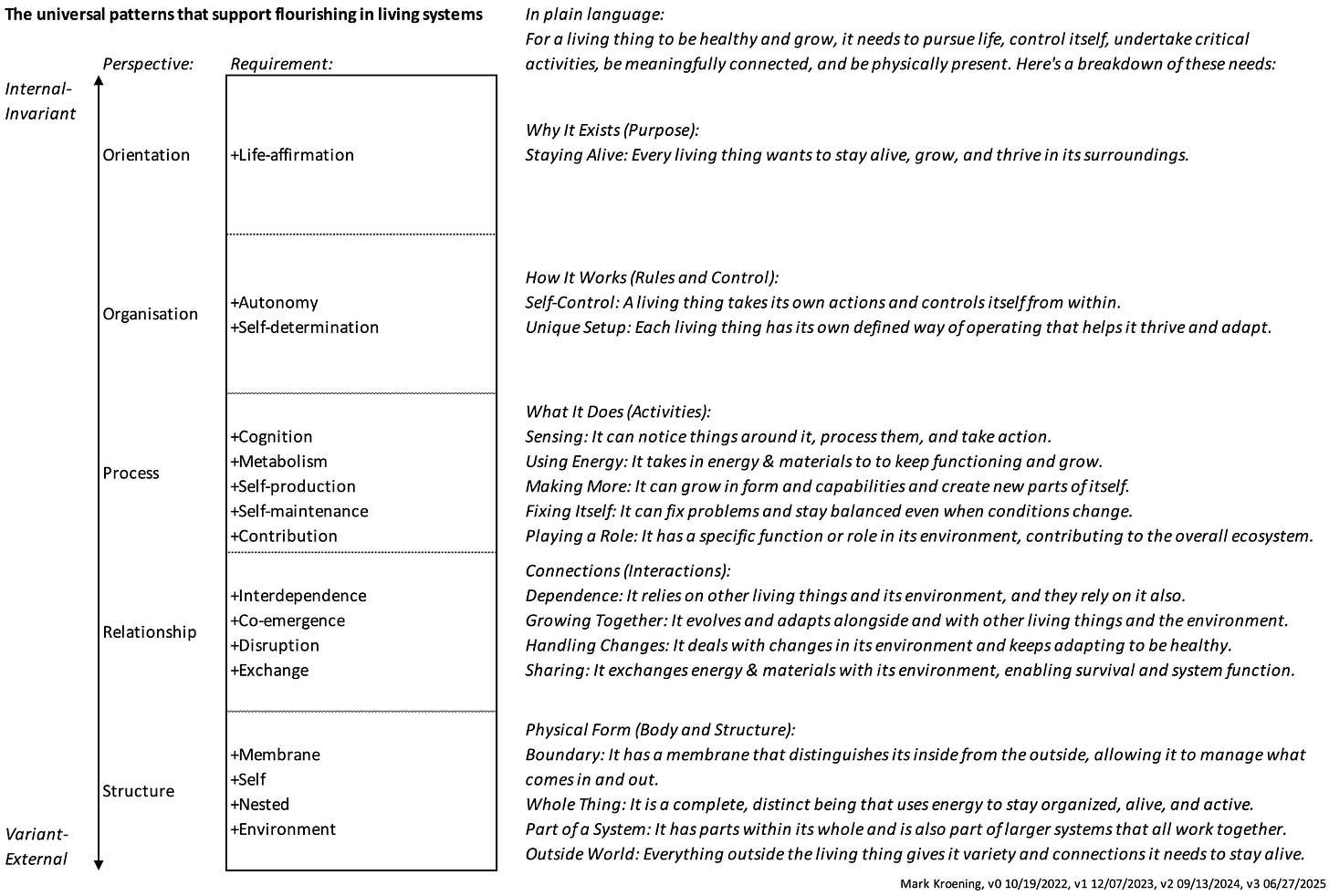Introducing the Living Systems Framework
If you’re trying to help the world become healthy, regenerative, or life-affirming — you need to know what life actually does and what informs it.
The Living Systems Framework below offers a practical and rigorous compilation of the universal patterns that support flourishing in all living systems. I developed it during PhD research, when I realized that this knowledge — while present across the life sciences — was not structured, shared, or applied in ways that actually help human systems become coherent with life.
This framework is not a metaphor. It’s not a toolkit borrowed from biology. It is a pattern-based structure of what life requires — so that we might act in ways that enable health and evolution in our families, organizations, economies, and cultures.
What It Shows
The framework is structured around three nested levels:
Pursuit of Life: All living systems — including humans — exist to persist, maintain, and evolve life.
Perspectives: To understand this comprehensively, it helps to view every complex system through five interrelated perspectives: Orientation, Organization, Process, Relationship, and Structure.
Requirements: Within each perspective are specific patterns — requirements — that must be present for a living system to be healthy, adaptive, and able to evolve. These include things like autonomy, self-production, interdependence, and membrane integrity.
When these patterns are missing or out of balance, living systems degenerate. When they are present and aligned, living systems flourish. The patterns both inform flourishing life and can be observed in every expression of it.
Why It Matters
Most efforts to change the world — even well-intentioned ones — are built from mechanistic assumptions. We optimize, manage, or design without reference to how living systems actually work. That’s why so many change efforts feel hollow or fail altogether.
This framework helps people, teams, and organizations shift from trying to fix broken systems to generating and participating in living ones. It supports the development of living systems consciousness — a way of seeing and acting that’s informed by life itself.
The fundamental knowledge required for abstract-conscious humans to act in coherence with life has now been introduced. From here, we can get to work.
And if you haven’t yet, I encourage you to explore more at collaborativism.org — that’s where I introduce this work more fully and invite those who are ready into coaching, deeper exploration, and real-world application.
—Mark

